In the modern era, the automation industrial sector has emerged as a transformative force, revolutionizing the way industries operate. The automation industrial encompasses a wide range of technologies and processes that aim to replace manual labor with automated systems, enhancing efficiency, productivity, and quality. This article will explore the various aspects of the automation industrial, including its significance, key components, applications across different industries, and future prospects. 🚀
Significance of the Automation Industrial
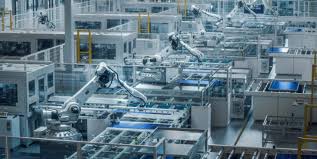
The automation industrial has far-reaching implications for businesses and economies worldwide. One of the primary advantages is increased productivity. Automated systems can operate continuously without breaks, reducing downtime and increasing the output of goods and services. For example, in a manufacturing plant, automated assembly lines can produce a higher volume of products in a shorter period compared to manual assembly. This not only boosts the production capacity of companies but also enables them to meet the growing demands of the market more effectively.
Automation also leads to improved quality control. Automated machines are capable of performing tasks with a high degree of precision, minimizing errors and ensuring consistent product quality. In industries such as electronics manufacturing, automated robotic arms can assemble components with extreme accuracy, resulting in higher-quality products. Moreover, automated inspection systems can detect defects in real-time, allowing for immediate corrective action and reducing the likelihood of defective products reaching the market.
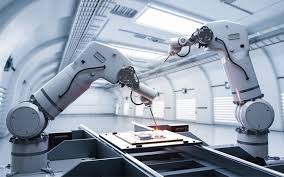
Another significant benefit of the automation industrial is cost savings. While the initial investment in automated systems may be substantial, over time, they can lead to significant cost reductions. Automated systems eliminate the need for a large workforce, reducing labor costs. Additionally, they can optimize resource utilization, such as energy and raw materials, leading to further cost savings. For instance, in the automotive industry, automated painting systems can apply paint more efficiently, reducing paint waste and energy consumption.
The automation industrial also plays a crucial role in enhancing workplace safety. By replacing humans in hazardous environments, such as those involving heavy machinery, high temperatures, or toxic substances, automation reduces the risk of accidents and injuries. In the mining industry, automated vehicles can be used to transport materials in dangerous underground mines, protecting workers from potential harm.
Key Components of the Automation Industrial
Programmable Logic Controllers (PLCs)
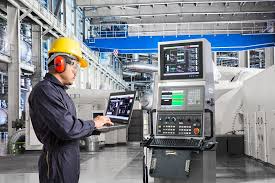
PLCs are the backbone of many automation systems. These digital computers are designed to automate industrial processes by controlling machinery and equipment. PLCs can be programmed to perform a variety of tasks, such as controlling motors, valves, and sensors. They are highly reliable and can operate in harsh industrial environments. For example, in a chemical plant, a PLC can be used to control the flow of chemicals, ensuring that the production process runs smoothly and safely.
Industrial Robots
Industrial robots are one of the most visible components of the automation industrial. These robots are designed to perform repetitive tasks with high precision and speed. They can be equipped with various tools and sensors to perform tasks such as welding, painting, assembly, and material handling. In the automotive industry, robots are commonly used for welding car bodies, which requires a high level of precision and consistency.
Supervisory Control and Data Acquisition (SCADA) Systems
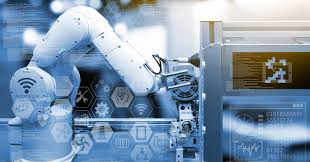
SCADA systems are used to monitor and control industrial processes remotely. They collect data from various sensors and devices in the industrial environment and provide real-time information to operators. SCADA systems can also be used to control the operation of machinery and equipment, ensuring that the processes are running optimally. For example, in a power plant, a SCADA system can be used to monitor the generation, transmission, and distribution of electricity, ensuring a stable power supply.
Human-Machine Interfaces (HMIs)
HMIs are devices that allow operators to interact with automated systems. They provide a user-friendly interface for operators to monitor and control the operation of machinery and equipment. HMIs can display real-time data, such as process variables, alarms, and status information. They also allow operators to input commands and adjust settings. For example, in a manufacturing plant, an HMI can be used to start, stop, and adjust the speed of a production line.
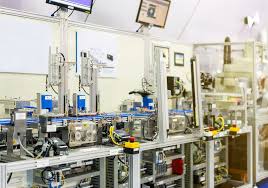
Let’s summarize these key components in a table:
| Component | Function | Example Application |
|---|---|---|
| Programmable Logic Controllers (PLCs) | Automate industrial processes by controlling machinery and equipment. | Controlling chemical flow in a chemical plant. |
| Industrial Robots | Perform repetitive tasks with high precision and speed. | Welding car bodies in the automotive industry. |
| Supervisory Control and Data Acquisition (SCADA) Systems | Monitor and control industrial processes remotely. | Monitoring power generation in a power plant. |
| Human-Machine Interfaces (HMIs) | Provide a user-friendly interface for operators to interact with automated systems. | Controlling a production line in a manufacturing plant. |
Applications of the Automation Industrial Across Industries
Manufacturing Industry
The manufacturing industry is one of the largest beneficiaries of the automation industrial. In manufacturing, automation is used in various stages of the production process, from raw material handling to final product assembly. Automated production lines can increase production speed, reduce costs, and improve product quality. For example, in the furniture manufacturing industry, robots can be used to cut and shape wood, while automated assembly lines can assemble the furniture pieces.
Food and Beverage Industry
In the food and beverage industry, automation is crucial for maintaining hygiene and quality standards. Automated systems are used for tasks such as food processing, packaging, and labeling. For example, in a bakery, automated dough mixers and ovens can ensure consistent quality in the production of bread and pastries. Automated packaging machines can also ensure that the products are properly sealed and labeled, reducing the risk of contamination.
Pharmaceutical Industry
The pharmaceutical industry requires high levels of precision and cleanliness. The automation industrial plays a vital role in ensuring the quality and safety of pharmaceutical products. Automated systems are used for tasks such as drug synthesis, tablet pressing, and packaging. For example, in a pharmaceutical manufacturing plant, robots can be used to handle and dispense drugs, ensuring that the dosage is accurate and the products are free from contamination.
Logistics and Warehousing Industry
In the logistics and warehousing industry, automation is used to improve efficiency and reduce costs. Automated storage and retrieval systems (AS/RS) can store and retrieve goods quickly and accurately. Robotic palletizers can stack and unstack pallets, reducing the need for manual labor. Automated guided vehicles (AGVs) can transport goods within the warehouse, improving the flow of materials.
Let’s compare the applications in different industries in a table:
| Industry | Application of Automation Industrial | Benefits |
|---|---|---|
| Manufacturing | Automated production lines, material handling. | Increased production speed, reduced costs, improved quality. |
| Food and Beverage | Food processing, packaging, labeling. | Maintained hygiene, consistent quality, reduced contamination risk. |
| Pharmaceutical | Drug synthesis, tablet pressing, packaging. | Ensured quality and safety, accurate dosage, reduced contamination. |
| Logistics and Warehousing | Automated storage and retrieval, robotic palletizing, AGVs. | Improved efficiency, reduced labor costs, better material flow. |
Future Prospects of the Automation Industrial
The future of the automation industrial looks extremely promising, with several trends shaping its development. One of the key trends is the integration of artificial intelligence (AI) and machine learning (ML) into automation systems. AI and ML algorithms can be used to analyze large amounts of data collected from sensors and other sources, enabling predictive maintenance, quality control, and process optimization. For example, AI can predict when a machine is likely to fail based on its historical data and operating conditions, allowing for proactive maintenance and reducing downtime.
The Internet of Things (IoT) is also set to revolutionize the automation industrial. IoT devices can be used to connect various components of an industrial system, enabling real-time monitoring and control. This allows for the implementation of smart manufacturing concepts, where production processes can be optimized based on real-time data. For example, sensors can be installed on machines to monitor their performance, and the data can be used to adjust the production parameters in real-time.
Another trend is the development of collaborative robots, or cobots. These robots are designed to work alongside humans, assisting them in tasks that require human dexterity and judgment. Cobots can improve productivity and safety in the workplace by taking over repetitive and dangerous tasks, while still allowing humans to perform more complex and creative tasks.
In conclusion, the automation industrial has had a profound impact on various industries, and its influence is only set to grow in the future. The key components of the automation industrial, such as PLCs, industrial robots, SCADA systems, and HMIs, have enabled the automation of industrial processes, leading to increased productivity, improved quality, cost savings, and enhanced workplace safety. The applications of the automation industrial across different industries, including manufacturing, food and beverage, pharmaceutical, and logistics, have demonstrated its versatility and importance.
As the industry continues to evolve with the integration of emerging technologies such as AI, IoT, and cobots, the future of the automation industrial looks bright. Businesses that embrace automation will be better positioned to compete in the global market, while also contributing to the overall development and progress of the industrial sector. 🌟
